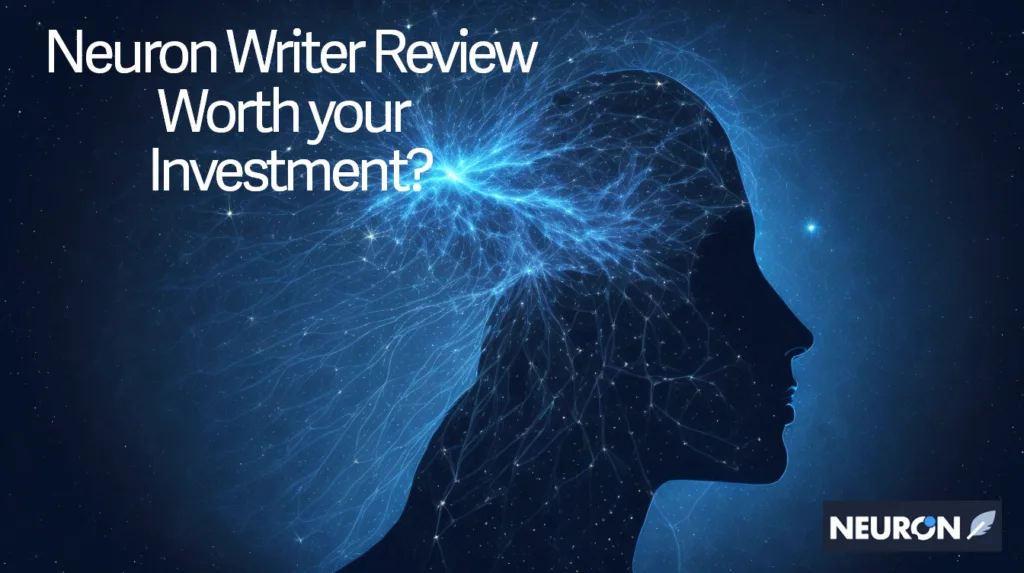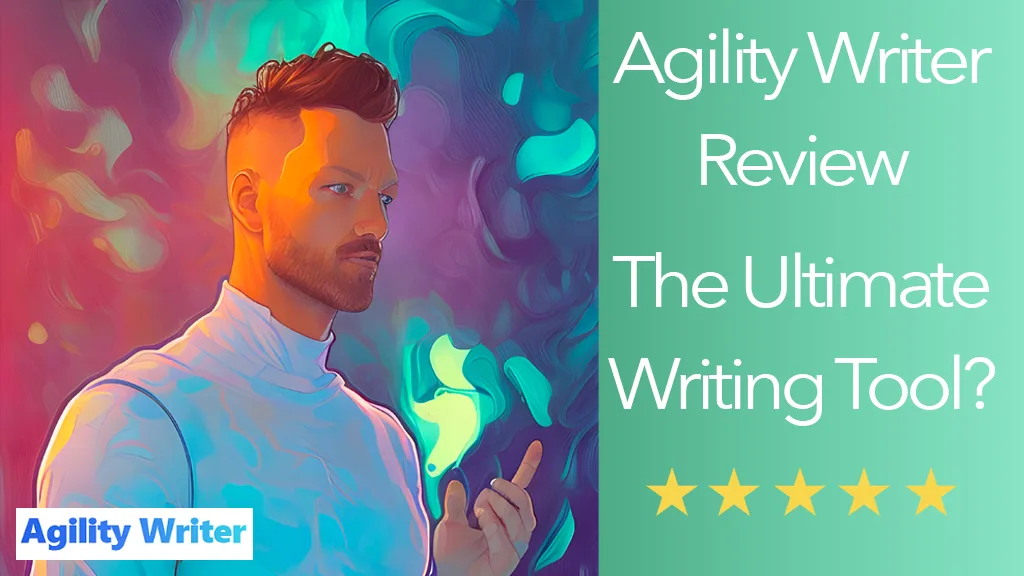Having the ability to avoid AI content Detection is an extremely valuable resource in today’s digital age, where content reigns supreme. With millions of websites and blogs competing for attention, creating original and compelling material that sticks out from the crowd is critical.
However, as AI-based scanning technologies and automated algorithms have proliferated, creating “original” content has become increasingly difficult.
- What is Google's Stance on AI Content?
- What is AI Content Detection?
- Unleashing Your Creativity: 11 Powerful Techniques to Avoid AI Content Detection
- How Best to Use the Tips Above to Avoid AI Content Detection.
- Empowering Resources: What are the Best AI Content Detection tools?
- Crafting Authentic Content: Best Practices to Uphold Quality Standards
- Future Horizons: Challenges and Trends for Content Creators
- FAQ
- Conclusion: The Delicate Balance Between AI Assistance and Authenticity.
What is Google’s Stance on AI Content?

Google encourages website owners and bloggers alike to not only write unique but also valuable content. Content that provides value-addition information about what people search for online.
Google is one company that takes plagiarism very seriously. They have developed sophisticated algorithms like Panda which assesses website quality based on various factors including duplicate or low-quality content.
Google uses its technology to help webmasters improve their sites’ rankings by detecting poor-quality pages with thin or duplicated material.
In saying that, Google does not penalise AI-written content. Google finally stated their view on the matter on February 8th, 2023, claiming that automation has long been used to produce important information like sports scores, weather forecasts, and transcripts.
AI can be used to inspire new forms of expression and creativity, as well as to help content creators produce outstanding digital content.
What is AI Content Detection?
AI content detection refers to the use of automated algorithms and tools that scan written material for specific patterns or markers. These systems are designed to identify instances of plagiarism, duplicate content, or other forms of manipulation.
While they serve an important purpose in maintaining quality standards online, they can also pose a challenge for those looking to create original content without triggering these detectors.
The importance of avoiding AI content detection cannot be overstated. Failure to do so can result in penalties from search engines like Google and damage your reputation as a writer or marketer.
In this article, we’ll explore some foolproof techniques that you can use to avoid AI content detection while still producing high-quality content that engages your audience.
Unleashing Your Creativity: 11 Powerful Techniques to Avoid AI Content Detection
Now let’s explore some creative techniques you can use to outsmart AI detection while still producing high-quality content:
Tip #1: Unorthodox Spelling Strategies for Camouflaging Text

One way to avoid AI content detection is by using unorthodox spelling strategies such as replacing letters with numbers or symbols. For example, instead of writing “you,” you could write “u” or “y0u.” While this may seem unconventional, it helps break up text strings and makes them less likely to trigger an automated system.
Tip #2: Infusing Expressive Emojis for a Human Touch

Emojis are another great way of adding personality and human touch into your writing to help avoid AI content detection. They’re expressive characters that convey emotions in ways that words alone cannot match. By incorporating emojis strategically throughout your text, you’ll make it more engaging while making it harder for automated algorithms to detect potential matches.
Tip #3: Leveraging Strategic White Spaces and Underscores
Another technique is leveraging strategic white spaces and underscores within your text string so that they break up long blocks of texts into smaller segments, thereby making them less likely triggers when compared against existing databases.
|Before | After |
|——-|——–|
|”I love my dog” | “I_l_o_v_e_ _m_y_ _d_o_g_”|
This technique works because most automated algorithms compare entire sentences at once, so breaking up the text string into smaller segments makes it less likely to trigger a match.
Tip #4: Activating the Power of the Active Voice

Using active voice instead of passive voice can also help avoid AI detection. Passive voice often involves longer sentences with more complex structures that make them easier for automated systems to identify as potential matches against existing databases.
|Passive | Active |
|——–|———|
|”The ball was thrown by John” | “John threw the ball”|
By using active voice in your writing, you’ll create shorter sentences with simpler structures that are harder for automated algorithms to detect as potential matches.
Tip #5: Crafting Engaging Narratives with a Conversational Flair
Crafting engaging narratives with a conversational flair is another effective strategy to avoid AI content detection while still producing high-quality content. By creating stories that engage readers emotionally and intellectually, you’ll keep them interested in what you have to say while making it harder for automated systems to detect potential matches against existing databases.
Tip #6: Integrate Uncommon Synonyms and Phrases
Integrating uncommon synonyms and phrases throughout your text can also help avoid AI detection. Automated algorithms are designed to look for specific words or phrases when comparing texts against existing databases; however, by incorporating unique vocabulary into your writing strategically, you’ll create more original content that’s less likely to trigger an alert.
Tip #7: Utilize Local Cultural References

Utilizing local cultural references is another effective way of creating original content while avoiding AI detection. By incorporating unique aspects of your local culture into your writing, you’ll create more engaging content that’s less likely to trigger an alert.
Tip #8: Incorporate Quotations and Citations
Incorporating quotations and citations from reputable sources can also help avoid AI detection. By citing credible sources within your text, you’ll create more authoritative content that’s harder for automated algorithms to detect as potential matches against existing databases.
Tip #9: Embrace Humor and Wit in Your Writing

Embracing humor and wit in your writing is another effective strategy for outsmarting AI detection while still producing high-quality content. By adding a touch of humor or wit to your writing, you’ll make it more engaging while making it harder for automated systems to detect potential matches against existing databases.
Tip #10: Add Personal Anecdotes and Experiences
Adding personal anecdotes and experiences throughout your text can also help avoid AI detection. Automated algorithms are designed to look for specific language patterns when comparing texts against existing databases; however, by incorporating unique personal stories into your writing strategically, you’ll create more original content that’s less likely to trigger an alert.
Tip #11: Introduce Analogies and Metaphors
Introducing analogies and metaphors into your writing is another effective strategy for outsmarting AI detection while still producing high-quality content. Analogies provide a relatable comparison between two different concepts, while metaphors use figurative language to describe something in a new way.
|Without analogy | With analogy |
|—————–|————–|
|”He was very tall” | “He towered over us like a skyscraper”|
How Best to Use the Tips Above to Avoid AI Content Detection.
While these techniques can help you avoid AI detection, it’s essential to ensure that your writing is still compliant with legal and copyright standards.
Always give credit where credit is due by citing sources and avoiding plagiarism.
It’s important to understand the limitations of these techniques as well as their potential risks.
While they can help you create original content that engages your audience while avoiding AI detection, there’s always a risk of being caught if you’re not careful.
Optimal practices include using multiple strategies in combination for maximum effectiveness; checking for duplicate content before publishing; ensuring compliance with legal and copyright standards; creating engaging narratives with a conversational flair.
By using these techniques strategically throughout our text strings you will be able produce authentic content which would stand the test of time.
Empowering Resources: What are the Best AI Content Detection tools?
Combining the above techniques with AI content detector tools such as Originality.AI, Passed.AI, and Content at Scale can further help you write authentic engaging content.
These tools use advanced algorithms to scan written material for specific patterns or markers that indicate plagiarism or duplicate content.
Some of the best AI content detection tools include Originality.AI, Passed.AI, and Content at Scale. These tools are designed explicitly for writers who want to create original work without triggering automated algorithms.
Crafting Authentic Content: Best Practices to Uphold Quality Standards
To produce high-quality content that stands out from others’, we should focus more on authenticity rather than trying too hard at avoiding AI detection, because this way our content would be unique enough without having any similarity issues whatsoever.
Best practices include conducting thorough research before writing; using multiple sources when possible; citing credible sources within your text strings ;and incorporating personal anecdotes or experiences into our writing strategically.
Future Horizons: Challenges and Trends for Content Creators

As AI-based scanning systems continue to evolve, content creators will face new challenges in producing original work that engages their audience while avoiding detection.
However, by staying up-to-date with the latest trends and techniques, we can continue to create high-quality content that stands out from others’.
FAQ
Q: How do you humanize AI content?
A: Humanizing AI content involves adding a personal touch to the text, making it feel more relatable and engaging for readers. By following the tips detailed in this article, you can effectively humanize AI content.
Q: How do you get around an AI detector?
A: You get around AI detection by humanizing your content and using the tips explained in this article, which include:
Tip #1: Unorthodox Spelling Strategies for Camouflaging Text
Tip #2: Infusing Expressive Emojis for a Human Touch
Tip #3: Leveraging Strategic White Spaces and Underscores
Tip #4: Activating the Power of the Active Voice
Tip #5: Crafting Engaging Narratives with a Conversational Flair
Tip #6: Integrate Uncommon Synonyms and Phrases
Tip #7: Utilize Local Cultural References
Tip #8: Incorporate Quotations and Citations
Tip #9: Embrace Humor and Wit in Your Writing
Tip #10: Add Personal Anecdotes and Experiences
Tip #11: Introduce Analogies and Metaphors
Q: What tool makes AI generated text undetectable?
A: The best tool currently on the market to create content that is not detectable by AI is Content at Scale. If you want to learn more about this tool and how to use it, click here!

Q: How do you know if content is AI-generated?
A: Google has AI detection software that can determine what content is generated by AI or humans. An easy way to determine if content is AI or human is with the help of certain AI detection tools such as Originality.AI, Passed.AI and Writer.com. For a full breakdown on these tools and others, click here!
Conclusion: The Delicate Balance Between AI Assistance and Authenticity.
In conclusion, the rise of AI content detection systems has brought about new challenges for content creators.
While these tools can be helpful in detecting duplicate or plagiarized content, they can also stifle creativity and limit originality.
As a content creator, it is important to strike a balance between utilizing AI assistance and maintaining genuine originality.
By implementing the techniques outlined in this article, you can outsmart AI detection while still producing high-quality, authentic content.
Remember to always ensure compliance with legal and copyright standards when creating your content.
Additionally, stay up-to-date on the latest trends and best practices in order to remain competitive in an ever-evolving digital landscape.
Finally, there are many resources available to help you navigate the world of AI content detection. Consider using tools such as Originality.AI, Passed.AI or Content at Scale to assist you in creating unique and authentic pieces that will stand out from the crowd. For a full comprehensive review of these and other powerful AI content detection tools, click here!
By following these tips and staying informed about emerging technologies and best practices, you can create compelling content that engages your audience while avoiding potential pitfalls associated with AI detection systems.
Best AI Tools for Ecommerce: Boosting Sales and Efficiency
Do you have, or are looking to create, your own online business and want to…
Best AI Tools for Bloggers – Boost Your Blogging Productivity
In today’s fast-paced digital world, bloggers are constantly looking for ways to streamline their writing…
Can you monetize AI Generated Videos On Youtube? Yes, But…
Are you looking to monetize AI generated videos on YouTube? You’re in the right place….
Neuron Writer Review: Worth Your Investment in 2023?
Are you looking for an advanced AI-driven writing tool to improve your content creation process…
Agility Writer Review: The Ultimate Writing Tool?
Are you tired of spending countless hours researching and writing long-form content for your blog…
How To Avoid AI Content Detection – 11 Key Tips and Tricks
Having the ability to avoid AI content Detection is an extremely valuable resource in today’s…







